Introduction
Extreme sports known for their high risk and adrenaline, are not for the faint of heart. They are a testament to the limits of human capability, a blend of skill, courage, and a healthy dose of calculated risk. These athletes push boundaries, defy gravity, and leave us in awe of their daring feats. Let’s dive into the 15 most extreme sports and the daredevils who have made their mark.
15 Extreme Sports and Their Daredevil Athletes
- Big Wave Surfing – Laird Hamilton
- Wingsuit Flying – Jeb Corliss
- Freestyle Motocross – Travis Pastrana
- Freerunning/Parkour – Jason Paul
- BMX Vert – Mat Hoffman
- Rock Climbing (Free Soloing) – Alex Honnold
- Skateboarding – Tony Hawk
- Ice Cross Downhill – Cameron Naasz
- Speed Skiing – Simone Origone
- BASE Jumping – Valery Rozov
- Highlining – Dean Potter
- Volcano Boarding – Zoltan Istvan
- Cave Diving – Jill Heinerth
- Downhill Mountain Biking – Aaron Gwin
- Street Luge
1. Big Wave Surfing – Conquering Monstrous Mountains of Water
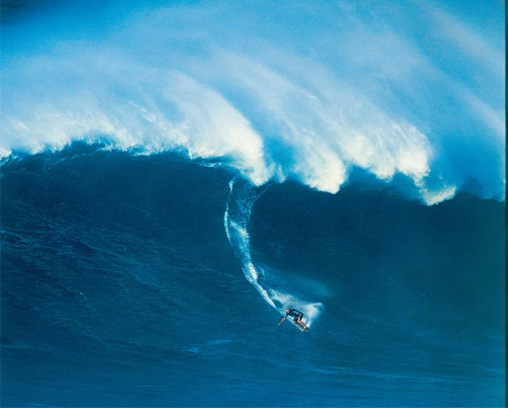
Big wave surfing is the undisputed heavyweight champion of wave riders. Imagine yourself paddling into a wave that towers over you like a five-story building, a churning wall of water poised to either propel you into exhilaration or crush you with its immense power. That’s the world of big wave surfing.
These daredevils, like the legendary Laird Hamilton, brave ocean giants that reach heights of 50 feet or more. It’s a sport that demands a unique blend of physical prowess, intimate knowledge of the ocean’s moods, and an unyielding mental fortitude. Big wave surfers need incredible upper body strength to paddle into these monsters, core strength and balance to maintain control on the wave’s face, and exceptional breath-holding abilities to endure the long rides and potential wipeouts.
Unlike traditional surfing where surfers catch rolling waves, big wave surfers rely on techniques like tow-in surfing, where a jetski tows them into the wave, allowing them to reach speeds and tackle waves that would be impossible to paddle into on their own.
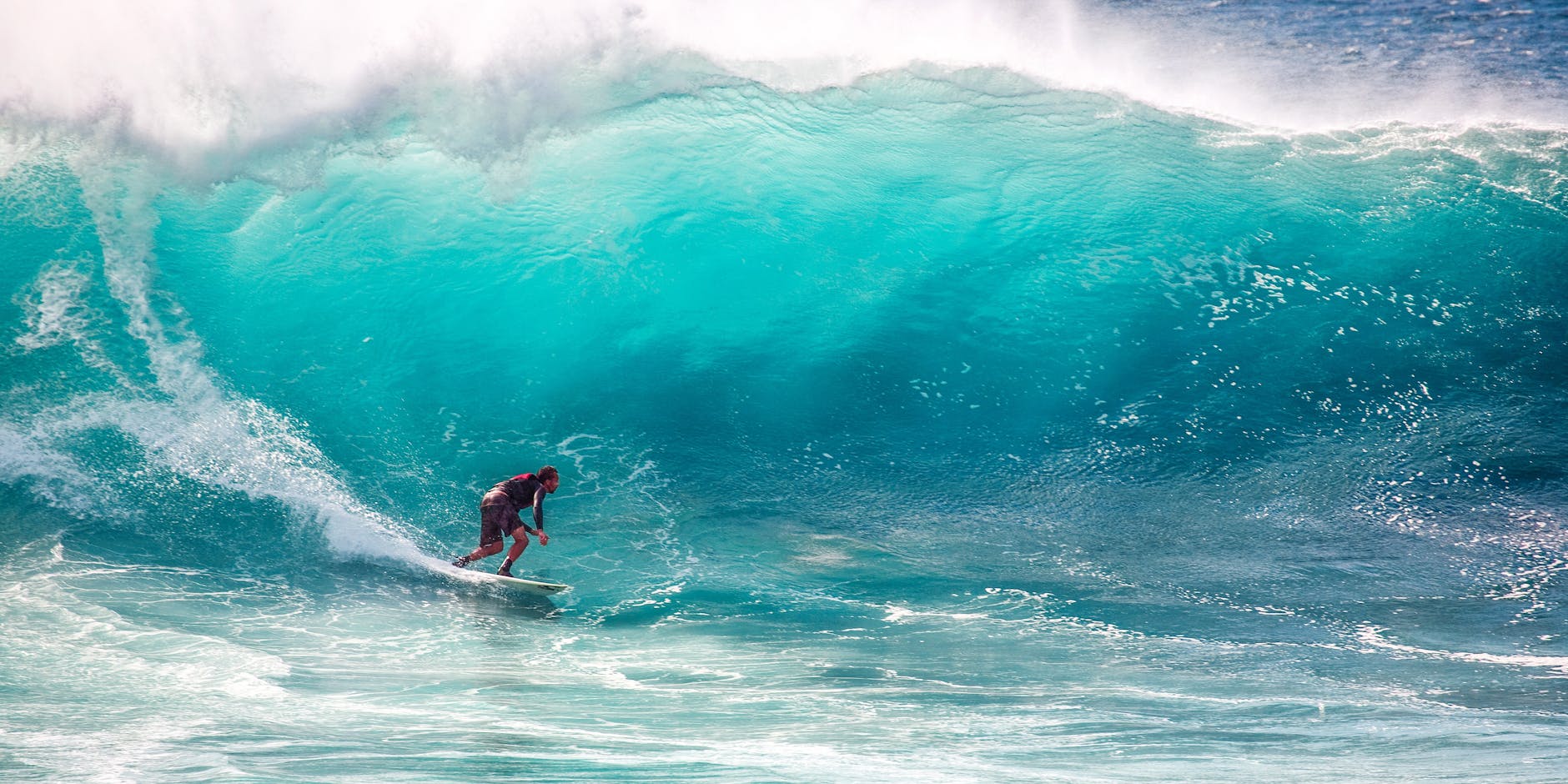
Big wave surfing isn’t just about riding the wave; it’s about surviving it. Wipeouts in big surf can be life-threatening, with surfers tumbling underwater for extended periods and being tossed around by the immense power of the wave. Despite the risks, big wave surfing continues to allure thrill-seekers, pushing the boundaries of what’s possible and redefining the limits of human courage in the face of nature’s raw power.
Origin and Popularity: While surfing has roots in Polynesia, big wave surfing as we know it emerged in the mid-20th century in Hawaii. Today, big wave surfing destinations include spots like Mavericks in California, Jaws in Maui, and Nazaré in Portugal.
2. Wingsuit Flying – Taking Flight Like a Human Bird
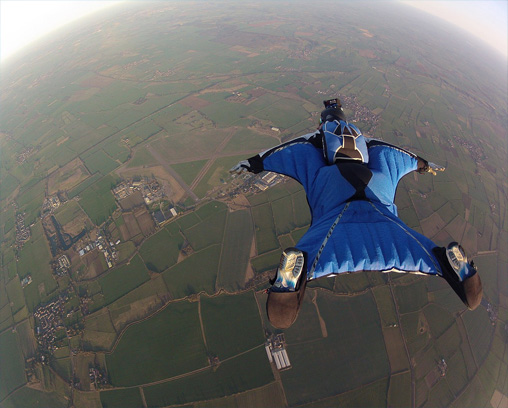
If you’ve ever dreamed of flying, wingsuit flying is about as close as a human can get. Wingsuits are specially designed suits that inflate to create wing-like surfaces, allowing pioneers like Jeb Corliss to glide and even soar through the air. Wingsuit flyers leap from breathtaking locations like cliffs, buildings, or airplanes, and they use their bodies to control their flight path.
Reaching speeds in excess of 100mph, they fly in breathtaking proximity to mountain ridges, through canyons, or even alongside aerial formations. Wingsuit flying is a heart-pounding spectacle, requiring incredible precision, nerve, and a fine-tuned sense of aerodynamics. This is one sport where a single mistake can have grave consequences.
Origin and Popularity: Wingsuit flying is a relatively young extreme sport, evolving in the late 1990s. It’s particularly popular in regions with mountainous terrain and favorable wind conditions, such as locations within the Alps in Europe, or in mountain ranges across the United States.
3. Freestyle Motocross (FMX) – Pushing the Limits of Gravity on a Motorcycle

The roar of engines, the smell of burning fuel, and the audacity of gravity-defying stunts – that’s the world of Freestyle Motocross (FMX). Athletes like Travis Pastrana are masters of aerial control, propelling themselves and their bikes off massive ramps to perform dazzling tricks like backflips, front flips, and mind-boggling variations.
FMX isn’t just about individual stunts; it’s about pushing the envelope of what’s possible on two wheels. Every new trick demands exceptional body control, a deep understanding of physics, and the willingness to risk a serious injury to achieve the seemingly impossible.
Origin and Popularity: FMX started emerging in the late 1990s and quickly gained popularity worldwide. Major FMX competitions and events like the X Games have propelled the sport to global recognition, inspiring a new generation of riders to push the boundaries of aerial motorcycle mayhem.
Read More: 15 Revolutionary Fitness Trends That Will Change How You Workout
4. Freerunning/Parkour – Turning the Urban Jungle into a Playground

Freerunning and parkour are the art of moving through an urban environment fluidly, creatively, and efficiently. Practitioners, known as traceurs, like Jason Paul view walls, railings, and even buildings as obstacles to be conquered and opportunities to express themselves. They jump, climb, vault, and swing with remarkable precision, turning their bodies into tools of urban exploration.
Freerunning and parkour blend athleticism with artistry. Success depends on strength, agility, body control, and the ability to plan routes quickly with a clear understanding of spatial relationships. What separates freerunning from traditional obstacle courses is its emphasis on freedom of movement and creative self-expression.
Origin and Popularity: Parkour has its roots in military training techniques developed in France during the early 20th century. It evolved into its modern form in the 1990s. Today, both freerunning and parkour have passionate communities around the world, with many cities hosting dedicated training grounds and competitions.
5. BMX Vert – Aerial Acrobatics on Two Wheels

BMX Vert sends riders soaring high above the coping of a giant halfpipe-shaped ramp. Pioneers like Mat Hoffman revolutionized the sport by taking tricks once only dreamed of and turning them into reality. With each air, they perform a whirlwind of spins, flips, and intricate combinations.
Vert riding epitomizes the fearless spirit of BMX. It requires immense power to launch oneself high enough to pull off these complex aerials, exceptional body control to rotate and manipulate the bike mid-air, and the guts to overcome the fear of those stomach-dropping landings.
Origin and Popularity: BMX originated in the 1970s in Southern California, and the vert discipline emerged shortly after. The sport has seen ups and downs in mass popularity, but it consistently has a dedicated global community of riders who continue to push the boundaries of BMX Vert.
6. Rock Climbing (Free Soloing) – Defying Gravity with Bare Hands
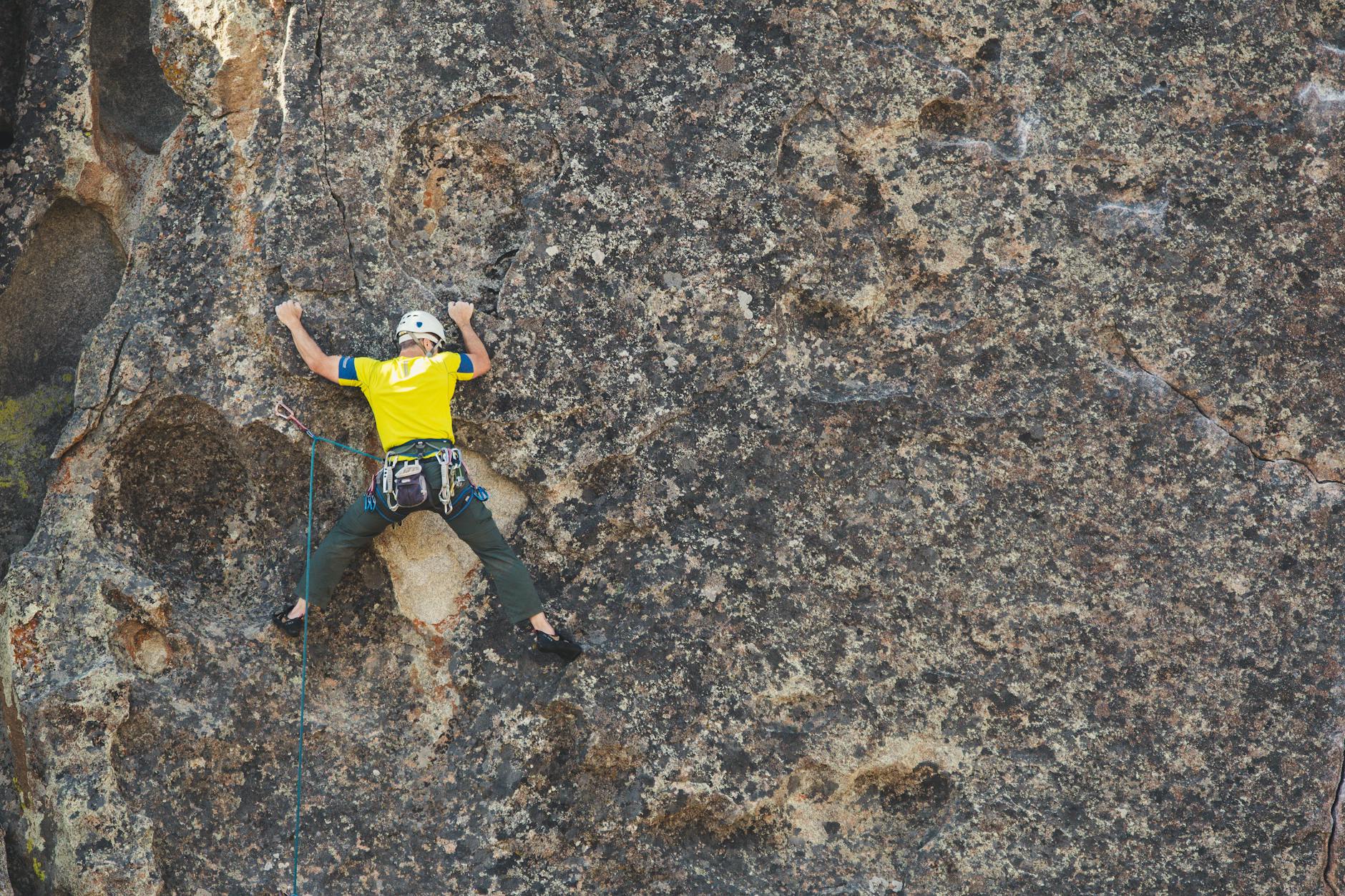
Rock climbing itself is a challenging sport, a test of strength, technique, and problem-solving skills. But free soloing takes things to a completely different dimension. Free solo climbers like Alex Honnold ascend massive rock faces using only their hands and feet—no ropes, no harnesses, and a single mistake can be fatal.
This is a sport for the meticulously prepared and mentally unbreakable. Free soloing requires a deep understanding of one’s own limits, a mastery of climbing technique, and the ability to perform under immense pressure. It’s the ultimate act of calculated risk, showcasing the raw power of human determination.
Origin and Popularity: The origins of free soloing are tied to the early history of rock climbing, evolving from a necessity into a high-risk discipline. While it will always be a niche activity, the feats of free solo climbers continue to capture imaginations around the world.
7. Skateboarding – Defying Physics on Four Wheels
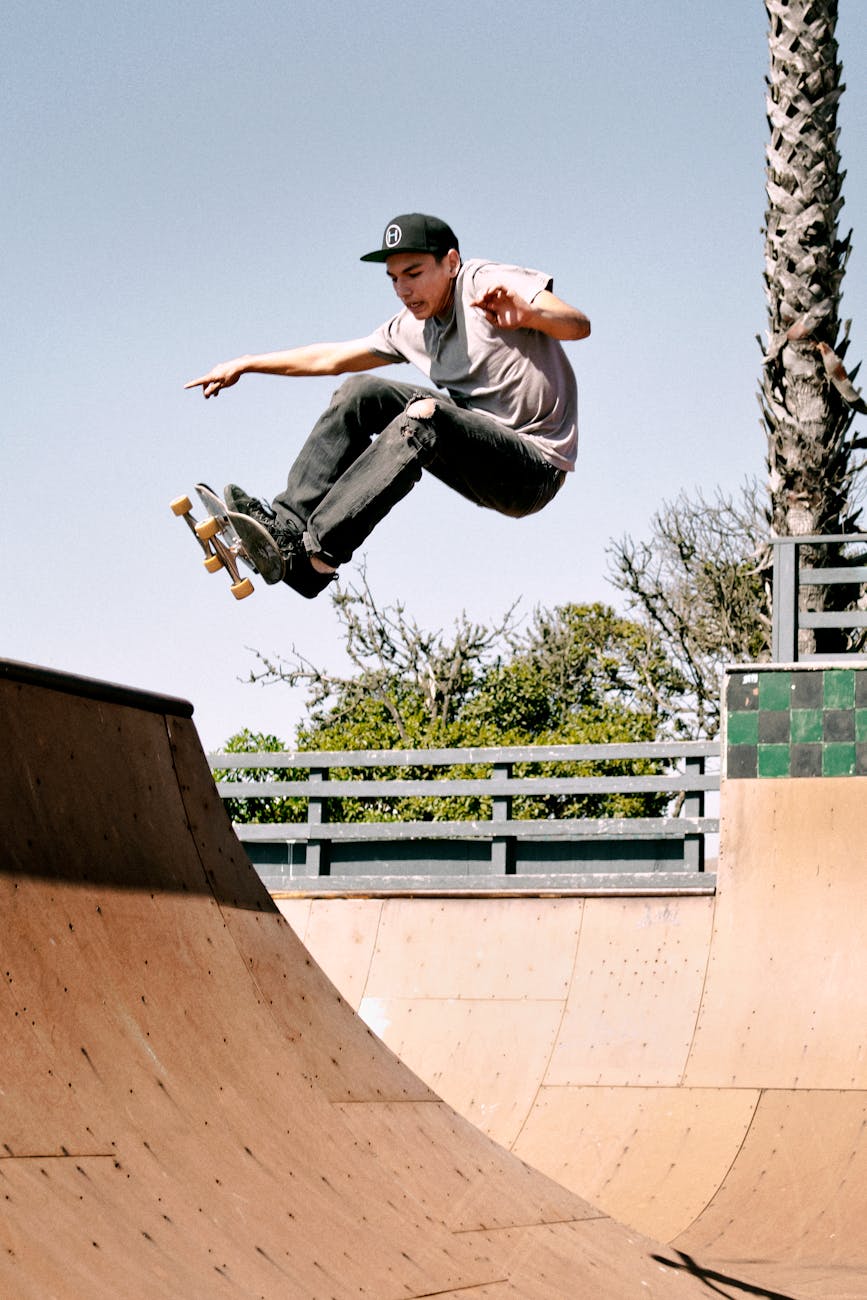
Skateboarding is a sport deeply rooted in creativity, freedom, and the relentless desire to surpass limits. Groundbreaking pioneers like Tony Hawk transformed concrete bowls and cityscapes into their own personal canvases, inventing tricks and redefining what was possible on a simple wooden board with wheels.
Skateboarding is as much about individual expression as it is about athleticism. Riders invent new tricks by blending jumps, spins, flips, grinds, and slides, all while maintaining perfect balance above their small board. Its popularity has exploded, with cities building dedicated skateparks to accommodate the sport’s booming community.
Origin and Popularity: Skateboarding emerged in California in the 1950s and quickly spread worldwide. While its mainstream popularity has fluctuated over time, it continues to be a force in action sports and a testament to the endless creativity of those who defy gravity on four wheels.
8. Ice Cross Downhill – High-Speed Chaos on Ice

Imagine hurtling down a narrow, winding ice track built with jumps, rollers, and sharp turns, all at speeds exceeding 50mph, while locked in a furious battle for position with other racers around you. That’s the insanity of Ice Cross Downhill.
Athletes like Cameron Naasz wear protective gear similar to hockey players, shielding themselves from the inevitable hard falls in this contact sport. It’s a relentless test of strength, agility, speed, and strategic thinking, requiring competitors to make split-second decisions while jostling for position on a slippery and unforgiving track.
Origin and Popularity: Ice Cross Downhill is a relatively young sport, emerging in the early 2000s. It’s gained popularity in countries with cold climates and winter sports infrastructures, with major competitions held across Europe and North America.
9. Speed Skiing – Flying Down Mountains on Skis
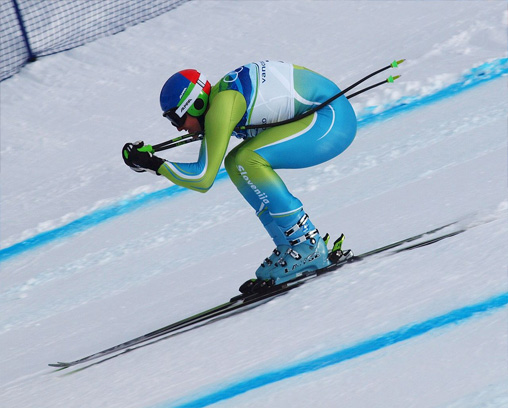
Speed skiing is all about one thing: going as fast as humanly possible on skis. Competitors like Simone Origone launch themselves down incredibly steep, specially prepared slopes, wearing aerodynamic suits and helmets to minimize wind resistance. Their speeds are breathtaking, regularly exceeding 150mph, marking them among the fastest non-motorized athletes on Earth.
Like a sprinter on ice, speed skiers rely on exceptional leg strength, refined technique, and a hefty dose of courage. They must maintain absolute control at these extreme speeds, fighting against air resistance with every tuck.
Origin and Popularity: Speed skiing has been practiced in various forms since the late 19th century. It enjoys niche popularity, especially in European countries with alpine traditions. Dedicated speed skiing competitions offer a stage for these thrill-seekers to test the absolute limits of their abilities on skis.
Read More: Unforgettable Olympic Moments: 15 Times Athletes Made History
10. BASE Jumping – Leaping from the Edge
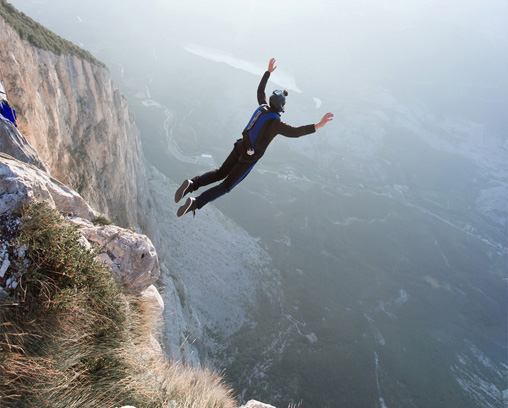
BASE jumping is the ultimate adrenaline rush for skydiving enthusiasts. Instead of jumping from planes, BASE jumpers like legendary pioneer Valery Rozov, leap from fixed objects: Buildings, Antennas, Spans (bridges), and Earth (cliffs). Unlike skydiving, BASE jumps happen from much lower altitudes, leaving little room for error and requiring immediate parachute deployment.
It’s a sport demanding split-second precision, extensive parachute handling skills, and the mental fortitude to launch oneself into the void from breathtaking heights. BASE jumpers often travel to remote locations in search of new and challenging jumping platforms, adding an element of exploration to their pursuit of the high-stakes thrill.
Origin and Popularity: BASE jumping evolved from skydiving during the late 1970s and remains a niche sport due to its inherent risks. It holds allure for a dedicated group of extreme athletes seeking the most challenging environments and the purest rush that freefall can offer.
11. Highlining – A Balancing Act High Above the World
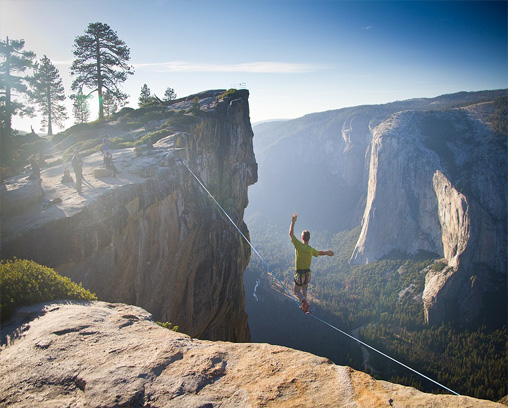
Highlining takes the concept of a tightrope and amps the fear factor to dizzying levels. Athletes like Dean Potter string slacklines across vast chasms – between mountains, rock formations, or even hot air balloons, hundreds of feet above the ground. They then defy gravity by walking across, performing tricks, or even sitting or lying on the line, all with the breathtaking expanse stretching out beneath them.
While some daring highliners go without safety gear, the practice is evolving to include harnesses and backup lines. Still, slacklining at great heights requires extraordinary balance, core strength, and unwavering focus. It’s a meditative dance hundreds of feet in the air, a test of both physical and mental control.
Origin and Popularity: Highlining emerged from within the rock climbing community in the 1980s. It remains a niche extreme sport, but the jaw-dropping images of highliners have captured a global audience, inspiring both awe and a touch of terror.
12. Volcano Boarding – Sliding Down the Slopes of an Active Volcano
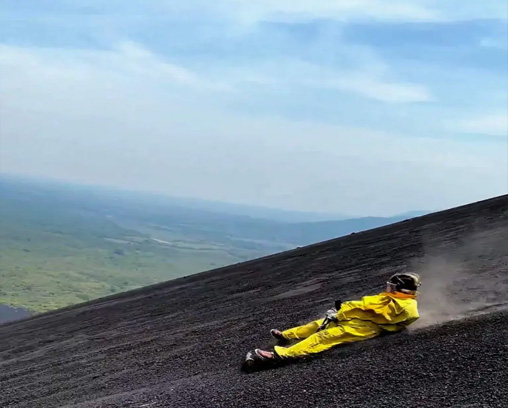
For a truly unique mix of adrenaline and geological fascination, there’s volcano boarding. Adventurers like Zoltan Istvan climb active volcanoes carrying specialized boards made of plywood or metal. They then slide down the volcano’s slopes, filled with loose ash and rocks, at surprisingly high speeds.
It’s a blend of surfing, sledding, and a calculated dose of “why not?” Volcano boarding offers an otherworldly landscape as a playground, along with the very real risk of unpredictable volcanic activity. This sport certainly caters to those looking for a once-in-a-lifetime thrill.
Origin and Popularity: Volcano boarding began in Nicaragua in the early 2000s. It remains a niche attraction, offered in a few specific locations with suitable active volcanoes like Cerro Negro in Nicaragua.
13. Cave Diving – Exploring the Depths of a Hidden World

Cave diving transports explorers into the enigmatic depths of underwater caves. Pioneers like Jill Heinerth navigate labyrinthine tunnels, squeezing through tight passages in near-zero visibility conditions, braving a world unseen by most.
Success in cave diving relies on meticulous training, advanced diving techniques, specialized equipment, and a calm head. Divers must navigate intricate cave systems, often mapping uncharted passages, all while managing their air supply and contingency plans for emergencies deep beneath the surface. It’s a sport for those who thrive in the challenges imposed by extreme environments.
Origin and Popularity: Cave diving emerged from a desire to explore underwater cave systems in the mid-20th century. It remains a niche extreme sport due to its highly technical nature and potential dangers. However, within the cave-diving community, there’s a dedicated pursuit of exploring the secrets of the underwater world.
Read More: Top 15 Surprising Ways Social Media Impacts the Economy
14. Downhill Mountain Biking – A Wild Ride on Rough Terrain
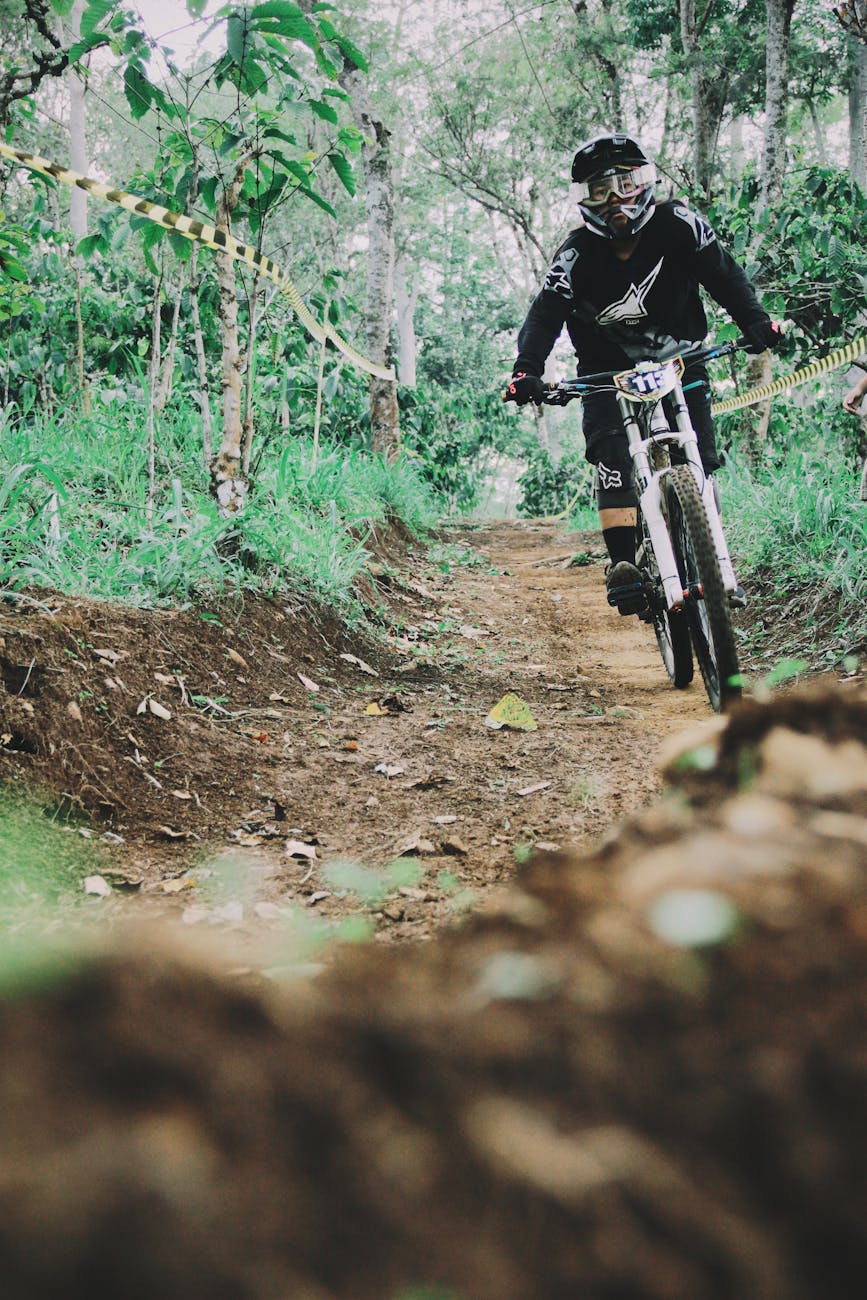
Downhill mountain biking throws riders into breakneck descents down challenging mountain trails. Think rock gardens, drops, roots, and insanely technical terrain – all tackled at incredible speeds. Athletes like Aaron Gwin expertly manage their bikes through the rough environments, maintaining control, seeking the fastest lines, and pushing the limits of both their endurance and their bike’s capabilities.
Downhill riding demands fitness, technical mastery, and the guts to face down intimidating features without hesitation. It’s a sport defined by high-speed exhilaration and the constant battle against gravity as riders race the clock through the unpredictable forces of nature.
Origin and Popularity: Downhill mountain biking evolved from mountain biking in the 1970s. It has gained mainstream recognition in recent decades, with competitions and dedicated downhill bike parks appearing around the globe.
15. Street Luge – High-Speed Thrill on Asphalt
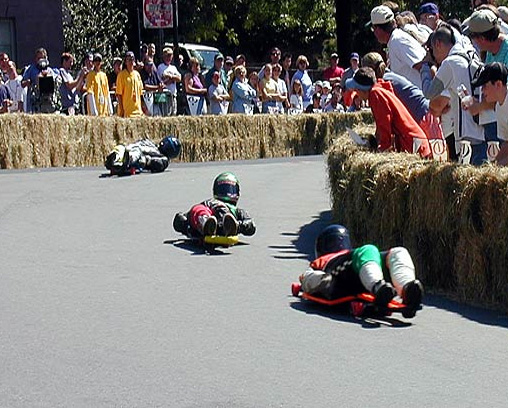
Street luge takes the concept of skateboarding and throws it into overdrive. Riders lie in a reclined position on specially-designed luge boards, hurtling down paved roads at breakneck speeds. They use their bodies to steer and maintain control, navigating corners just inches from the unforgiving asphalt.
Born from the desire to reach higher speeds while downhill skateboarding, street luge demands exceptional balance, core strength, and a calculated tolerance for risk. Riders wear protective gear, including full-face helmets, but the high speeds and proximity to the ground make injuries a real possibility.
Street luge is a sport of precision. Riders seek the fastest lines, tucking in to maximize aerodynamics and reach speeds that can exceed 60mph. It’s a pure adrenaline rush, a marriage of downhill racing and sheer guts.
Origin and Popularity: Street luge evolved from downhill skateboarding in the 1970s. It remains a niche extreme sport but boasts a passionate global community. Competitions take place on closed roads, testing skill and the relentless pursuit of speed.
Conclusion:
The athletes who dedicate their lives to extreme sports possess an unparalleled blend of courage, skill, and an unquenchable thirst for pushing boundaries. Whether soaring through the air, conquering treacherous terrain, or defying gravity itself, they embody the human spirit’s drive to explore our limits and redefine what’s possible.
While only a select few may ever attempt these death-defying feats, extreme sports offer a thrilling glimpse into extraordinary capabilities. They inspire us to dream big, embrace challenges, and appreciate the immense power and resilience of human beings who dare to chase the extraordinary.
15 FAQs (Frequently Asked Questions):
-
Are extreme sports really that dangerous?
Yes, extreme sports carry a significant level of risk. Injuries are common, and in some cases can be severe or fatal. However, experienced athletes take risk mitigation seriously, undergoing rigorous training and utilizing safety equipment whenever possible.
-
What motivates people to participate in extreme sports?
Motivations vary, but common factors include the adrenaline rush, the challenge of pushing personal boundaries, the pursuit of mastery over a skill, and the camaraderie within extreme sports communities.
-
Do I need to be in peak physical condition to try extreme sports?
While exceptional fitness is beneficial, many extreme sports have entry points for varying skill levels. It’s essential to start under the guidance of experienced instructors and progress gradually.
-
Are extreme sports only for young people?
Absolutely not! While many professional athletes are younger, there are older practitioners in numerous extreme sports. Age shouldn’t be a barrier if you possess the passion, dedication, and respect for the risks involved.
-
How do I find out more about a specific extreme sport?
Seek out reputable online resources, videos, and governing bodies for specific sports. Locate clubs or training facilities in your area to learn from experienced athletes and get a firsthand understanding of the sport’s demands.
-
Are there any rules in extreme sports?
Yes, while pushing boundaries is inherent to extreme sports, there are rules, especially in competitions. Governing bodies set standards for safety, fair play, and scoring of tricks or performances.
-
How do extreme sports athletes mentally prepare?
Mental preparation is just as vital as physical training. Athletes use techniques like visualization, meditation, and sports psychology strategies to manage fear, focus under pressure, and maintain a positive mindset.
-
What’s the difference between extreme sports and action sports?
The terms are often used interchangeably. Generally, extreme sports emphasize a higher level of risk and demand an exceptional skill set. Action sports is a broader term encompassing many adrenaline-fueled activities.
-
Are extreme sports expensive?
Costs vary widely. Some sports, like parkour, can be relatively inexpensive. Others, like wingsuit flying or BASE jumping, require substantial investments in equipment, training, and travel.
-
Do extreme sports athletes have regular jobs?
Some top-level athletes earn enough through sponsorships and competitions to make it their full-time career. However, many hold regular jobs or balance their passion for extreme sports while pursuing other careers.
-
Are extreme sports bad for the environment?
Environmental impact is a growing concern. Some sports leave a smaller footprint than others. There’s a push towards sustainable practices, responsible event organization, and minimizing travel impacts.
-
What is the future of extreme sports?
Extreme sports are constantly evolving, with athletes inventing new tricks and pushing limits. Technology also plays a role with advanced equipment and filming techniques allowing for spectacular footage. It’s likely extreme sports will continue to gain popularity as people seek excitement and inspiration.
-
Can women excel in extreme sports?
Absolutely! There are many incredible female athletes in extreme sports, challenging stereotypes and proving that courage and skill have no gender.
-
Are all extreme sports shown in the X Games?
The X Games showcase some of the most popular extreme sports, but there are many disciplines not featured. Other competitions or events may cater to other niche extreme sports.
-
How can I watch extreme sports events?
Many competitions are televised or streamed online. Check out sports channels, event websites, and social media platforms of athletes and governing bodies for live or recorded content.




